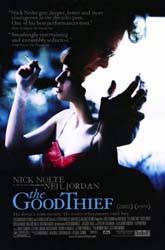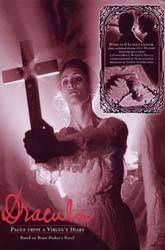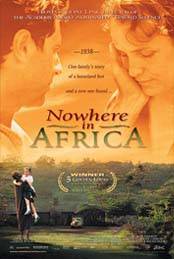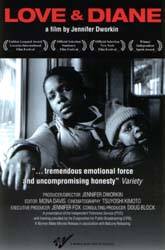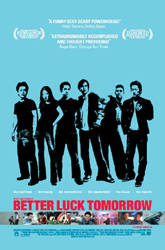 Director: Starring: Release:
11 Apr. 03
|
Better Luck Tomorrow BY: DAVID PERRY Admittedly, I have some misgivings about the underground push behind Better Luck Tomorrow to keep it from falling through the cracks as the rare semi-mainstream, gen-X accessible Asian-American film. What is disappointing is that this is not the type of reaction from within the community that welcomed some of Wayne Wang's better films (Chan Is Missing, Chinese Box), Ang Lee's dramas, or even John Woo's extremely successful vehicles. I suppose, there is some difference in that those films were more director driven and, in some cases (like most of Lee's American films and Woo's later films) have starred mostly Anglo actors instead of the desperately in need of work Asian acting community. Better Luck Tomorrow deserves a different push, one that does not seem culturally restrictive -- I mean, who wants to see a film that practically announces itself as the "Asian-American film of the new millennium" when your not an Asian-American -- or as sanctimonious. This is a film that works on many levels within its narrative, not at the personal level zealous marketers have pointed it towards. It is notable that this film gives some employment to underused Asian actors (for example, Parry Shen, who gives a great performance in this film, has only had a large amount of lines in one other film, The New Guy, in which he got to be the geeky math whiz Asian) but not necessarily that it is in the marketplace. The central thesis director Justin Lin and his producers seem to be going for is that Better Luck Tomorrow isn't even Asian at all. This is not another weepy multi-generational drama like Wayne Wang's The Joy Luck Club, but a Tarantino-esque, adrenaline-infused tale that speaks as equally to the Anglo MTV generation as to the Asian Americans it's supposedly addressing. The story is about four upper-middle class high school students in Orange County trying to prepare themselves for the "real world." For most of them, this begins with entrance into an Ivy League college thanks to their straight-A grades and exemplary extracurricular activities. But with great achievement comes great irresponsibility, evidently, as they become embroiled in every vice imaginable. First there's the downward spiral of cheating and shoplifting, which soon digresses into theft and drug dealing. The brains of the operation, Daric (Fan), keeps finding more things for them to do, and bad seed Han (Kang; who tries to give Joe Pesci a run for his money), infantile Virgil (Tobin), and love-struck Ben (Shen) are all too willing to follow. Better Luck Tomorrow is at its best when it tries to work with the satellite characters who are sucked into the hurricane from a teenage wasteland. This is especially true with the plot dealing with Ben's unrequited love Stephanie (Cheung) and her prep school boyfriend Steve (Cho). As narrator, Ben is already the main character of this film, but these characters and thier involvement with him help to establish Ben as the most defined of all the characters (this also allows Shen to show the most acting chops of the entire film). Lin (who also edited), cinematographer Patrice Lucien Cochet, and production designer Yoo Jung Han have an amazing sense of visuals, especially considering their relative inexperience with the feature film form. Most of the movie has the slickness of a Hollywood production with surely a fraction of the budget (distributor Paramount and MTV Films only came in after the film was finished and had produced a bidding war at the Sundance Film Festival). I respect the film despite its pace
problems -- the movie literally goes from ecstatic highs
to sedated lows in less than a beat -- and its inability
to work in a finale that ever feels as serious or as well
crafted as the rest of the film. There is much to like in
what Lin has done, and this respect comes from his
achievement as a director, not simply as an
Asian-American director. |
|
| ©2003, David Perry, Cinema-Scene.com, 25 April 2003 | ||

